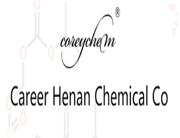| Chemical Properties |
Colorless clear liquid |
| Uses |
- Diethoxydimethylsilane may be used to modify epoxy resin6 and the surfaces of pure silica and Pd/SiO2 hydrogen gas sensors. Surface modification results in enhanced gas sensing properties of the sensors.
- It may be used as a precursor for the synthesis of ultrafine SiC powder.
- Diethoxydimethylsilane is an intermediate silane useful for blocking hydroxyl and amino groups in organic synthesis reactions. This silylating step allows subsequent reactions to be carried out which would be adversely affected by the presence of active hydrogen in the hydroxyl or amine groups. Following the reaction step, hydroxyl or amine groups blocked with diethoxydimethylsilane may be recovered by a hydrolysis procedure.
- It is also used for preparing hydrophobic and release materials as well as enhancing flow of powders.
- Studies report its use as a precursor for ORMOSIL (Organically modified SILicates) and thin a-SiOxCyHz films.
|
| General Description |
A colorless liquid. Flash point 75°F. Less dense than water and insoluble in water. Vapors heavier than air. |
| Air & Water Reactions |
Highly flammable. Insoluble in water. |
| Reactivity Profile |
These substances undergo chemical reactions only under relatively severe circumstances or in the presence of an effective catalyst that promotes reaction.. They are resistant to ignition, although they may become flammable at very high temperatures. They will be resistant to oxidation/reduction, except in the most severe conditions. These materials may be nontoxic. |
| Health Hazard |
Inhalation or contact with material may irritate or burn skin and eyes. Fire may produce irritating, corrosive and/or toxic gases. Vapors may cause dizziness or suffocation. Runoff from fire control may cause pollution. |
| Fire Hazard |
HIGHLY FLAMMABLE: Will be easily ignited by heat, sparks or flames. Vapors may form explosive mixtures with air. Vapors may travel to source of ignition and flash back. Most vapors are heavier than air. They will spread along ground and collect in low or confined areas (sewers, basements, tanks). Vapor explosion hazard indoors, outdoors or in sewers. Runoff to sewer may create fire or explosion hazard. Containers may explode when heated. Many liquids are lighter than water. |
| Safety Profile |
Mildly toxic by inhalation and ingestion. A skin and eye irritant. A dangerous fire hazard when exposed to heat, flame, or oxidizers. When heated to decomposition it emits acrid smoke and irritating fumes. |

 China
China






